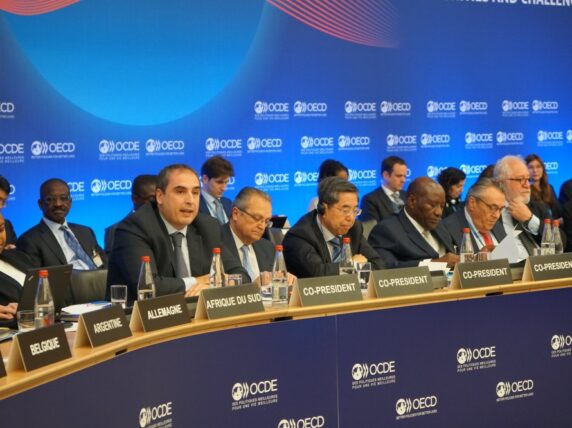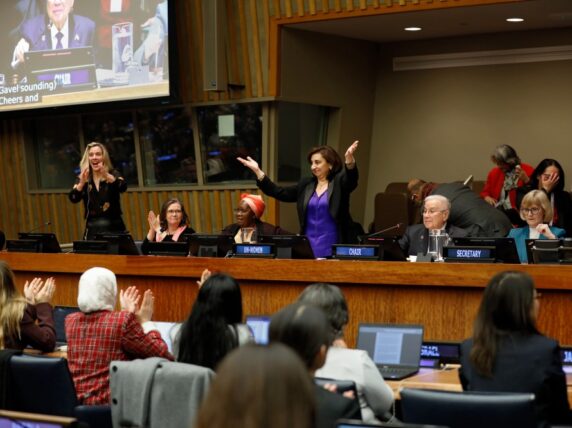The threat of famine returns, but world leaders remain silent
Millions of people across the world are being forced into a hunger and malnutrition crisis due to a deadly combination of climate change, conflict and a global cost of living crisis.
This only increases global inequalities, such as unequal distribution and therefore access to food. These factors are proving to be the catalyst for a return of famine-like conditions in countries like Somalia and Yemen.
Famine occurred in Somalia in 2011 amid an intense drought and conflict. Right now, conditions are widely predicted to be worse than in 2011 with Somalia facing the highest levels of food insecurity since the Integrated Food Security Phase Classification (IPC) records began. While rare, declarations of famine are the clearest indication of a food system which has buckled under the strain of repeated emergencies.
The result: children and adults dying of hunger due to the extreme shortage of food.
How is famine declared?
To assess food insecurity, the United Nations uses a five-phase scale known as the Integrated Food Security Phase Classification (IPC). The highest IPC level is “catastrophe” (Phase 5), where:
- At least one in five households has an extreme lack of food, and
- Acute malnutrition rates among children exceed 30 per cent, and
- 2 out of every 10,000 adults and/or 4 out of every 10,000 children die from starvation every day
Evidence of famine is built up through food security and nutrition surveys carried out within the IPC framework by governments, UN agencies, civil society, and other relevant partners including organisations like Action Against Hunger. They can point to the availability of food, levels of malnutrition and mortality rates in specific countries. If a country reaches the highest classification of Phase 5 on the IPC, then all parties to the framework must reach a consensus on this.
Is famine returning to some parts of the world?
It is feared that countries most affected by poverty, conflict, and climate change, are already on the brink of famine. Up to 222 million people globally face crisis level food insecurity (IPC3+), including more than 45 million on the brink of starvation (IPC4+). We know that once a famine is declared, it is already too late.
World leaders have consistently been made aware of this over the past years by agencies like Action Against Hunger. However, the release of commensurate funding for programmes to allow local communities to survive and thrive long into the future has nowhere near met the scale of need. According to the United Nations, right now, an all-time high of as many as 49 million people in 46 countries could be at risk of falling into famine if they do not get urgent assistance.
Join our humanitarian working group
Join this community of practice to discuss challenges, share resources and network with other professionals working in the humanitarian sector.
Find out moreHow can we prevent famine?
Famine should not be considered a singular event, but rather a result of shocks that are cumulative over time. With each shock, communities become less resilient and future famine becomes more likely to occur.
While a declaration of famine can result in the distribution of immediate aid, it is preventive funding which is the most effective – both in terms of impact and cost-effectiveness. The sooner we can respond to the main drivers of famine by safeguarding people’s access to humanitarian support, food, and basic services, as well as investing in long-term resilience building, such as funding climate change adaptation projects, the sooner we can move away from the perception that famine is inevitable. Famine is after all predictable and preventable.
We also need to listen to local communities affected by the global hunger crisis. Listening and responding to local groups as equal partners, promoting local leadership of the crisis response, and scaling up funding made available to them is crucial to tackling current and future crises.
A final call to governments around the world
In 2017, when famine threatened East Africa, early action from the UK helped to stave off the worst impacts and saved many thousands of lives by providing £861m in funding to the East of Africa. This time, despite forewarnings as early as 2020, the UK has not stepped up to meet the increasing needs across the region.
Ending preventable deaths must start now with immediate action from the UK government, by responding to urgent humanitarian need and taking diplomatic action as well as investing in anticipatory action and long-term resilience of communities to prevent future crises. People’s lives depend on it.




